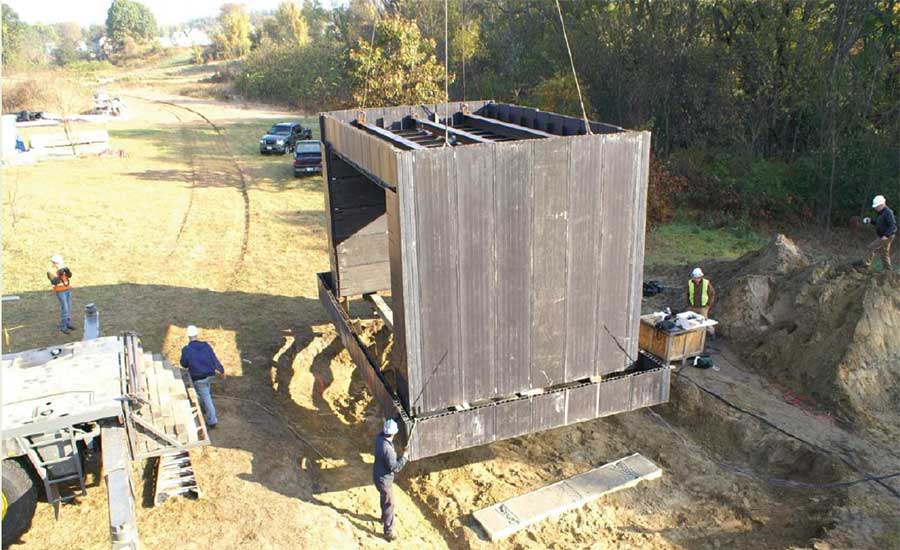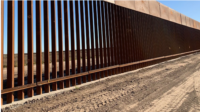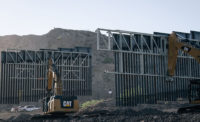Of all the ideas that have been suggested for the border wall, there is one that may help to bring together Mexico and the U.S., instead of pitting the countries against each another over illegal immigration. I’m part of a group of civil engineers in Massachusetts that has conceived of a program that is based on a recently acquired patent for an advanced concrete construction technology for building large-scale, monolithic concrete structures capable of physically partitioning two countries while serving to promote economic development. This fast and thrifty construction method and our proposed program prove that, as far as creativity is concerned, civil engineering isn’t dead yet.
The research behind our basic design concept has roots in a scheme to irrigate the Saudi Arabian peninsula and another scheme to develop a concrete alternative for replacing earthen levees in the years after Hurricane Katrina. Our idea is to construct a monolithic concrete conveyance structure that is capable of transporting saltwater to the Gulf of Mexico, off Texas, from the Pacific Ocean, off the California coast, a distance of about 2,000 miles. Drawn off the conveyance structure, the saltwater would be desalinated using solar-powered units to produce potable water and irrigate arid terrain on both sides of the border.
While the problem of moving large quantities of saltwater over mountains and deserts seems insurmountable, we now have the science, engineering and technology to do that in an economically viable way.
The proposed facility is essentially a very large pipeline in the form of a rectangular box culvert. While the problem of moving large quantities of saltwater over mountains and deserts seems insurmountable, we now have the science, engineering and technology to do that in an economically viable way.
The concrete conveyance structure itself forms an enclosed riverbed roughly 30 ft high and 90 ft across, with an average 18-in. wall thickness. Depending on soil conditions, it would be buried in a trench most likely about 10 ft deep, which means it would present a 20-ft-high barrier structure along the border, except at designated crossing stations. The top surface of the concrete riverbed is wide and strong enough to support an elevated, multilane highway, which is another deterrence to illegal crossings: Active interstate highways are virtually impossible to cross.
Consider all the benefits. Irrigating vast stretches of empty desert is not a small accomplishment. Inside the conveyance structure, a separate chamber would serve as an enclosed utility corridor to provide electrical services to communities in both countries using the flowing saltwater to power electricity-generating units positioned along the route. Powered by magnetic and pneumatic technologies, another enclosed chamber would be set aside for rapidly transporting containerized goods.
There are obstacles, of course. As we see it, the project’s biggest problem would be to acquire an international right of way, but the conventional border-wall ideas face that same challenge. Further, in our scheme, private-sector investors would be encouraged to finance design and construction of the facilities in exchange for concession rights.
Although it isn’t part of the Trump administration’s agenda, conveying large quantities of raw saltwater to a desert opens up a new approach to countering the impending threat of climate change, rising sea levels and ever-increasing human population. In this way, what was intended to be only a physical barrier could serve other functions and pay for itself many times over.
If you have an idea for a column, please contact Viewpoint Editor Richard Korman at kormanr@enr.com.




